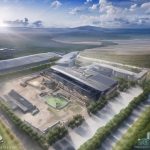Crafting the Ultimate Guide to Remote Property Site Selection in the 2030s
Escape the Ordinary: A Guide to Remote Property Site Selection
The allure of remote properties has intensified in the 2030s, driven by a confluence of factors reshaping how we live, work, and invest. The desire for tranquility, a refuge from bustling urban centers, is a powerful motivator. Coupled with this is the growing potential for investment opportunities in emerging remote markets, offering diversification and potential capital appreciation. Furthermore, a significant shift towards decentralized living, fueled by remote work opportunities and technological advancements, has made remote property ownership a viable and increasingly attractive option.
This guide navigates the complexities of remote property site selection, offering a roadmap for informed decisions, whether for a vacation retreat, an investment venture, or a permanent off-grid sanctuary. The evolving landscape of remote work has fundamentally altered the real estate market. No longer tethered to traditional office spaces, individuals and families are seeking properties in locations that prioritize lifestyle and personal well-being. This has spurred demand for properties in areas offering natural beauty, recreational opportunities, and a sense of community.
For investors, this translates to emerging markets with high growth potential. Identifying these locations requires careful analysis of demographic trends, economic indicators, and local development plans. For instance, areas experiencing infrastructure improvements, such as enhanced internet connectivity and transportation access, often present attractive investment prospects. Due diligence is crucial in this context, involving thorough research of property titles, zoning regulations, and potential environmental considerations. Acquiring land in remote areas presents unique challenges and opportunities. Understanding the legal framework governing land ownership is paramount.
Consulting with local experts, including real estate attorneys and land surveyors, is essential to navigate the complexities of land acquisition. Factors such as water rights, mineral rights, and access easements must be carefully considered. For those pursuing off-grid living, land acquisition becomes even more critical. The suitability of the land for self-sufficient living, including factors like water availability, solar exposure, and soil composition, must be thoroughly assessed. This often involves engaging environmental consultants and conducting soil tests to ensure the land can support off-grid infrastructure.
Whether seeking a vacation home, a primary residence, or a pure investment, defining your objectives is paramount. A vacation retreat may prioritize proximity to recreational activities and amenities, while a primary residence will require a more comprehensive assessment of infrastructure and community resources. Investment properties, on the other hand, necessitate a market-driven approach, focusing on potential rental income, appreciation rates, and long-term market trends. In the context of the 2030s, factors such as climate resilience and sustainability are also gaining prominence.
Properties located in areas less susceptible to extreme weather events and with access to renewable energy sources are becoming increasingly desirable. Finally, the decision to embrace remote living requires careful consideration of lifestyle implications. The transition from urban to rural living can be significant, requiring adaptability and a willingness to embrace a different pace of life. Access to healthcare, education, and essential services may differ significantly from urban environments. Building a strong local network and engaging with the community are crucial for a successful transition. Ultimately, the rewards of remote living, including increased tranquility, connection with nature, and a greater sense of self-sufficiency, can be immensely fulfilling for those prepared to embrace the unique challenges and opportunities it presents.
Defining Your Remote Property Goals
Defining your objectives is the cornerstone of any successful remote property acquisition. Before even beginning the search, it’s crucial to crystallize your intentions: Is this remote property intended as a seasonal vacation home, a primary residence for full-time remote living, or a strategic investment property aimed at generating future returns? Each purpose carries distinct implications for site selection criteria, development plans, and long-term management. For example, a vacation home might prioritize scenic views and recreational opportunities, while a primary residence necessitates reliable infrastructure and proximity to essential services.
An investment property, on the other hand, demands a thorough location analysis, considering factors such as appreciation potential and rental income possibilities. Establishing a realistic budget is equally critical, extending far beyond the initial purchase price. Prospective buyers must meticulously account for all potential costs, including land clearing, construction or renovation expenses, utility installations (especially crucial for off-grid living), property taxes, insurance premiums, and ongoing maintenance. For instance, a seemingly affordable plot of land might require substantial investment in well drilling or solar panel systems, significantly impacting the total cost.
Similarly, remote locations often incur higher transportation expenses for materials and labor. A detailed budget, encompassing both immediate and long-term expenditures, is crucial to avoid financial pitfalls and ensure the project’s viability. In the 2030s, with increasing land acquisition costs, this step is more critical than ever. Envisioning your desired lifestyle is paramount when selecting a remote property. Do you dream of a secluded cabin nestled deep within a forest, a self-sufficient homestead powered by renewable energy, or a modern, tech-enabled retreat with high-speed internet access?
Your lifestyle aspirations should directly influence your location analysis. For example, individuals seeking an off-grid living experience should prioritize properties with ample sunlight for solar power, access to natural water sources, and suitable soil for gardening. Conversely, those requiring seamless remote work capabilities must ensure reliable internet connectivity and proximity to transportation hubs. This alignment between lifestyle and location is crucial for long-term satisfaction and the overall success of your remote living endeavor. Furthermore, when considering remote property, you must also think about long-term goals, such as resale potential or future development opportunities.
An investment property, for example, should be located in an area with strong growth prospects and high demand. Factors like proximity to recreational areas, emerging infrastructure projects, and favorable zoning regulations can significantly enhance the property’s resale value. Conversely, if you intend to develop the property further, assess the land’s topography, soil conditions, and potential for expansion. In the 2030s, with increased interest in remote living, understanding these long-term implications is essential for making sound investment decisions.
Considering a property lease option, if available, can also be a useful way to test the waters before committing to a full property purchase. Finally, it is important to consider the potential for community and social interaction, even when embracing remote living. While the allure of solitude is often a primary driver, complete isolation can lead to unforeseen challenges. Research the availability of local community groups, social events, or shared interest organizations in the surrounding area. For those considering off-grid living, understanding the local network of suppliers and tradespeople can also be invaluable. Engaging with the local community can provide a sense of belonging and support, ensuring a more fulfilling and sustainable remote living experience. This is particularly relevant as the trend towards remote living continues to evolve in the 2030s, making community integration an increasingly important consideration in site selection.
Research and Due Diligence: Navigating the Uncharted Territory
Navigating the uncharted territory of remote property acquisition demands meticulous research and unwavering due diligence. Begin by identifying potential locations that align with your lifestyle vision, considering factors such as climate preferences, desired level of seclusion, and proximity to essential amenities. Are you envisioning a snowy mountain retreat, a sun-drenched coastal haven, or a tranquil woodland escape? Each environment presents unique opportunities and challenges, impacting everything from construction considerations to long-term maintenance costs. For instance, coastal properties may offer breathtaking views but require specialized building materials to withstand the corrosive effects of saltwater.
Thorough climate research, including historical weather patterns and future climate projections, is crucial for informed decision-making. Furthermore, assess the region’s susceptibility to natural disasters, such as wildfires, floods, or earthquakes, which could significantly impact your investment and safety. Once you’ve narrowed down potential regions, delve deeper into the local real estate market. Analyze property values, market trends, and potential risks, such as economic downturns or regulatory changes that could affect property ownership. For investment-focused acquisitions, consider factors like rental potential, projected appreciation rates, and the local tax landscape.
Leverage online real estate platforms, consult with local real estate agents specializing in remote properties, and connect with property owners in your target area to gain valuable insights. Virtual tours can provide a preliminary overview, but on-site visits are essential for a comprehensive understanding of the property and its surroundings. Walk the land, assess the topography, and evaluate access points and road conditions, particularly if considering off-grid living. This hands-on approach allows you to verify the accuracy of online representations and identify potential issues not readily apparent in virtual tours.
Due diligence is non-negotiable in remote property transactions. Legal reviews of property titles, deeds, and easements are essential to ensure clear ownership and avoid future disputes. Commission a professional property survey to accurately determine boundaries and identify any encroachments or discrepancies. Environmental assessments are crucial for uncovering potential hazards, such as contaminated soil or endangered species habitats. These assessments can also reveal valuable information about water resources, soil composition, and the suitability of the land for your intended use, whether it be cultivating a permaculture garden, installing solar panels, or building a sustainable off-grid homestead.
Infrastructure analysis, including water availability, sanitation systems, and power sources, is equally critical. If off-grid living is your goal, evaluate the feasibility of installing solar panels, wind turbines, or other renewable energy systems. Research local regulations regarding water usage and wastewater disposal. Understanding these crucial aspects will help you make informed decisions and avoid costly surprises down the line. For remote living enthusiasts, the allure of self-sufficiency and a closer connection to nature is undeniable.
However, practical considerations remain paramount. Evaluate the availability and reliability of essential utilities, including electricity, water, and internet access. If grid-tied utilities are unavailable or unreliable, factor in the cost and logistics of establishing off-grid systems. Research local service providers for internet access, as reliable connectivity is essential for remote work, communication, and access to essential information. Assess the proximity to healthcare facilities, emergency services, and supply chains for food and other necessities. Engage with local communities and online forums dedicated to remote living to gain insights into the challenges and rewards of this lifestyle. By conducting thorough research and due diligence, you can confidently navigate the complexities of remote property acquisition and embark on your journey toward a fulfilling and sustainable remote life in the 2030s and beyond.
Accessibility and Infrastructure: Bridging the Distance
Accessibility is paramount when considering a remote property, directly impacting both lifestyle and investment potential. Evaluate not just the presence of roads, but their condition and reliability throughout the year. A seemingly accessible location during dry months might become impassable during the rainy season, a crucial consideration for those planning year-round remote living. Proximity to airports or public transport hubs is also vital, especially if the property is intended as a vacation retreat or if frequent travel is required.
For investment properties, ease of access directly correlates with rental potential and overall property value, making thorough location analysis a key component of due diligence. Consider, for example, a property in the mountains; while the views may be breathtaking, a long, winding, and unpaved road can significantly deter potential renters or impact your own accessibility during emergencies. Beyond mere access, the reliability of essential utilities forms the backbone of comfortable remote living. Assess the availability of electricity, whether through grid connections, solar, wind, or generator systems.
Water sources must be scrutinized for both quantity and quality; consider well water testing, rainwater harvesting potential, or proximity to community water systems. Sanitation, often overlooked, requires careful planning, especially for off-grid living scenarios. Septic systems, composting toilets, and greywater management are all critical aspects that must be factored into your property purchase or lease. For instance, a property boasting a stunning view but lacking a reliable water source could require significant upfront investment and ongoing maintenance, impacting both your budget and lifestyle.
In the 2030s, understanding and planning for these utility infrastructures is crucial for successful remote property ownership. Communication networks are no longer a luxury but a necessity for remote workers and those seeking to maintain connections with the outside world. Reliable internet access is crucial for remote work, video conferencing, and accessing online services. Satellite internet, while available in remote areas, can be expensive and prone to weather-related disruptions. Cellular coverage should also be thoroughly investigated, as it is vital for communication and emergency services.
Consider properties within reach of fiber optic or other high-speed internet options if you intend to use the property as a primary residence or for remote work. The absence of reliable communication infrastructure can significantly hinder your ability to work, stay connected, and even access essential services, making this a critical factor in your site selection process. For a remote investment property, good internet connectivity is a must-have for attracting tenants. Furthermore, researching the availability of local services is vital for ensuring a safe and sustainable remote lifestyle.
Access to healthcare facilities, emergency services, and reliable supply chains for groceries and other essential goods must be considered. Engage with the local community to understand the social dynamics and potential challenges. Speaking with current residents can provide valuable insights into the area’s culture, infrastructure, and overall suitability for your needs. Consider the distance to the nearest hospital, fire station, and police department, as well as the availability of basic amenities such as grocery stores and hardware stores.
For example, a property that is a two-hour drive from the nearest hospital may not be suitable for families with young children or individuals with pre-existing health conditions. This level of due diligence is essential to avoid potential future problems and ensure long-term satisfaction with your remote property. Finally, for those considering off-grid living, a deep understanding of the local regulations regarding renewable energy and water management is crucial. Different regions have varying rules and restrictions regarding solar panel installations, well drilling, and other aspects of self-sufficient living.
Failing to adhere to these regulations can lead to legal issues and costly penalties. It is also important to evaluate the long-term sustainability of your chosen location in the 2030s, including potential impacts of climate change. Consider properties that have natural resources and are well-suited for implementing sustainable practices. For example, a property with ample sunlight for solar panels and a reliable source of water is more likely to be a successful off-grid investment in the long run. Thorough planning and research in these areas are essential to ensure a successful and legally compliant remote living experience.
Making the Decision: Embracing the Remote Life
As you approach the culmination of your remote property site selection journey, the final decision demands a synthesis of all preceding considerations. It’s not merely about finding a picturesque location; it’s about aligning your aspirations with the realities of remote living, investment potential, and long-term sustainability. Before committing, meticulously weigh the pros and cons of each shortlisted property, revisiting your initial goals and budget constraints. For example, if your primary objective is an investment property, analyze projected rental yields and potential appreciation rates within the specific location.
If off-grid living is the goal, ensure the land’s resources and environmental conditions are conducive to self-sufficiency. This stage requires a pragmatic assessment, not just an emotional one. Negotiating the terms of a property purchase or lease agreement is a critical step that often requires the expertise of a real estate professional familiar with remote land acquisition. Don’t hesitate to seek legal counsel to review contracts and ensure that all aspects of the transaction are in your best interest.
For instance, a seemingly minor clause regarding mineral rights could have significant long-term implications. Furthermore, understand the nuances of local regulations, which can vary dramatically from urban areas, including zoning laws, building codes, and environmental restrictions. A thorough understanding of these legal and regulatory aspects is crucial to avoid costly surprises down the road. In the 2030s, this level of due diligence is more critical than ever due to increasing complexity in land use and environmental policy.
Understanding the closing process is equally crucial, as it often entails a series of administrative steps, including title searches, escrow procedures, and the payment of closing costs. These costs, which can include transfer taxes, recording fees, and legal fees, can significantly impact your overall investment and must be factored into your budget. For those considering an investment property, the closing process may also involve specific requirements related to property insurance and tax reporting. Moreover, remote property purchases may present unique logistical challenges, such as the need for remote notary services or specialized closing agents.
Therefore, it’s important to plan and prepare for these contingencies in advance. Post-purchase, the focus shifts to property management, security, and ongoing maintenance. Remote properties often require more proactive management than urban dwellings, especially if they are intended for short-term rentals or are located in areas with limited access to local services. Consider engaging a property management company that specializes in remote properties, or develop a detailed maintenance plan that includes regular inspections, landscaping, and security measures.
For off-grid living, this might include maintaining solar panels, water filtration systems, and waste management facilities. Additionally, explore the options for remote security systems that can provide peace of mind when you are not physically present. These systems can range from basic alarms to advanced camera networks with remote monitoring capabilities. Finally, as you embark on your remote living journey, embrace the adventure with a clear vision and realistic expectations. Remote living offers a unique blend of tranquility and challenge, requiring adaptability, resourcefulness, and a strong sense of self-reliance.
The process of remote property site selection in the 2030s is complex, but with diligent planning, thorough due diligence, and a commitment to long-term sustainability, you can create a remote sanctuary that aligns with your personal and financial goals. Whether you are seeking an off-grid haven, a remote vacation retreat, or a strategic investment property, the key is to approach this decision with a blend of enthusiasm and informed pragmatism. This will ensure a smooth transition into the remote lifestyle you envision.


